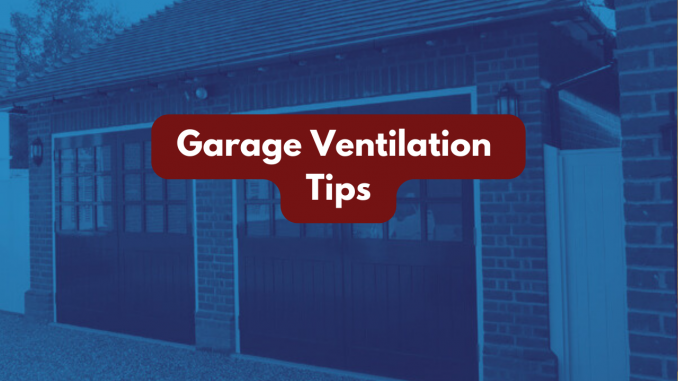
A well-ventilated garage is not only crucial for maintaining air quality but also plays a pivotal role in ensuring safety and comfort. Proper ventilation helps prevent the build up of harmful fumes, eliminates excess heat, and creates a more pleasant workspace. Whether you have a big double garage size or the minimum size of a garage, we’ll explore some top tips for effective garage ventilation that will contribute to a healthier and safer environment for both you and your vehicles.
1. Fans
Consider installing exhaust fans strategically placed to facilitate the efficient removal of stale air and fumes. Roof-mounted or wall-mounted fans can be excellent choices, depending on your garage’s layout.
2. Natural Ventilation Solutions
Take advantage of natural ventilation by installing windows and vents strategically. This allows fresh air to circulate and helps in reducing the reliance on mechanical systems. Louvered windows or roof vents can be effective options.
3. Maintain Garage Door Seals
Ensure that the seals around your garage doors are in good condition. Well-maintained seals prevent outdoor pollutants, dust, and unwanted pests from entering the garage, while still allowing for proper airflow.
4. Air Exchange Systems
Invest in an air exchange system to ensure a continuous supply of fresh air. These systems help in regulating temperature and removing pollutants by exchanging indoor air with filtered outdoor air.
5. Heat Recovery Ventilators (HRVs)
HRVs are an energy-efficient solution that transfers heat between incoming and outgoing air streams. This can be especially beneficial in colder climates, as it helps maintain a comfortable temperature while still providing fresh air.
6. Keep the Garage Clean and Organised
A clutter-free garage promotes better air circulation. Regularly clean and organise your garage to prevent the accumulation of dust and debris, which can compromise air quality.
7. Install a Carbon Monoxide Detector
Given that garages often house vehicles running on internal combustion engines, it’s crucial to install a carbon monoxide detector. This ensures early detection of any potential leaks, providing an added layer of safety.
8. Low VOC Paints and Materials
When renovating or painting your garage, opt for low VOC (volatile organic compound) paints and materials. These emit fewer harmful chemicals, contributing to better indoor air quality.
Effective garage ventilation is essential for maintaining a safe and comfortable workspace. By implementing these top tips, you can create an environment that promotes better air quality, temperature regulation, and overall well-being. Regular maintenance and thoughtful design choices will not only enhance the functionality of your garage but also contribute to a healthier and more enjoyable space for your automotive projects.


Leave a Reply